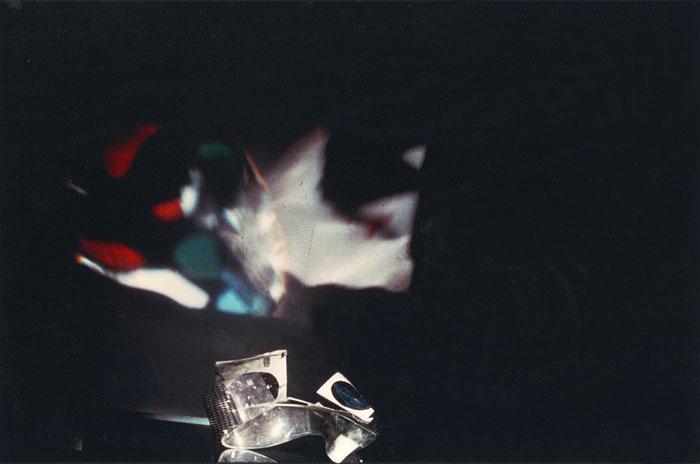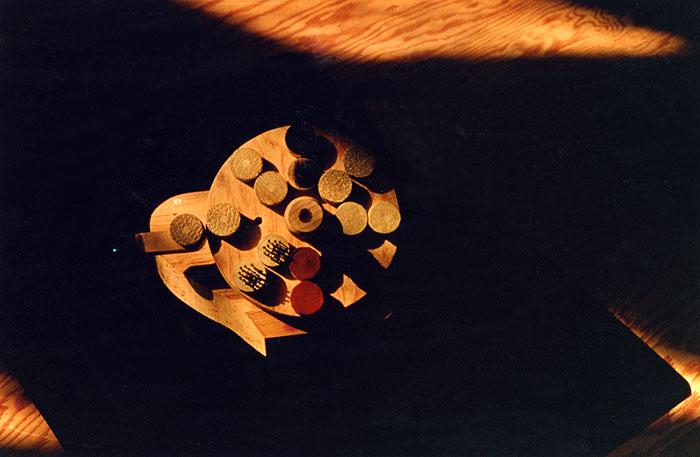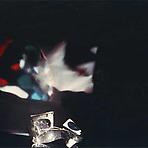László Moholy-Nagy
Photography and Sculpture
September 7 – October 13, 2007
Gallery 2
"The true artist is the grindstone of the senses; he sharpens eyes, mind, and feeling; he interprets ideas and concepts through his own media."
László Moholy-Nagy
Vision in Motion
Andrea Rosen Gallery is delighted to announce our second significant exhibition of the work of László Moholy-Nagy. Five years ago the gallery unveiled a selection of Moholy's color photographs that had never been seen before, marking the beginning of our journey with Moholy's work and our relationship with the Estate of László Moholy-Nagy. That first exhibition focused on the strikingly contemporary feel of the photographs as a testament to Moholy's innovative sensibility and influence on contemporary photography. As a central component of the gallery's programming, we are interested in exploring not only how the connections between historical and contemporary works reveal new contexts for looking at art, but also the interrelatedness within an individual artist's body of work. In this exhibition we have juxtaposed some of the most significant examples of his sculptural works with selected photographs, which present both lyrical and formal relationships and illuminate the significance of the three-dimensional object across his use of varied media.
The current exhibition looks at how Moholy used the same subject and materials to explore the complete transformation of light, reflection, and transparency through different media. While Moholy has received a lot of attention recently, with a monograph, László Moholy-Nagy: Color in Transparency, published by Steidl in 2006 and an international exhibition that traveled to the Tate Modern in London, the Kunsthalle Bielefeld and the Whitney Museum of American Art, New York, we found it particularly fascinating and relevant to extend the discourse by providing a focus on the interrelationships between Moholy's sculpture, photographs, paintings and kinetic works. This exhibition also creates an especially interesting link following our summer 2007 exhibition 1950s-1960s Kinetic Abstraction, which included eight artists who were all strongly influenced by Moholy's work and theories.
Throughout the 1920s Moholy worked on his kinetic sculpture, Light Space Modulator (also referred to as Light Prop for an Electric Stage, Light Display Machine, and Space Kaleidoscope), creating a theoretical legacy that influenced his subsequent sculpture, painting and photography. He defined a space modulator as "a structure that is made to develop the sense of space and explore the effective relationships which must be within the quality range of any architecture - an ABC of architectural and projective space." After ten years of working on the Light Space Modulator, he was finally able to implement its full kinetic manifestation and wrote: "The mobile was so startling in its coordinated motions and space articulations of light and shadow sequences that I almost believed in magic." Both the sculptural and photographic works in this show exemplify Moholy's belief that through synthesis, fundamental relationships are revealed that create a deep and layered experience. While maintaining their individual importance, the elements of color, light, object, and media work together to evoke in the viewer both an intellectual and emotional response.
In working toward a mastery of technique, Moholy developed an approach to color photography using Kodachrome film that, like his kinetic sculpture, Light Space Modulator, incorporates both space and time. Moholy considered the dye transfer method, the only method available for printing color at that time, as an interpretive method and longed for a process equivalent to the negative/positive relationship of black and white printing. Therefore, very few of Moholy's Kodachromes were printed. The George Eastman House in Rochester, New York, owns the only known vintage color print and we are honored to have the opportunity to include it in this exhibition. Today the process known as Chromogenic printing, which is used most often when printing from film, provides the technology that Moholy desired.
It is through the works in this exhibition that Moholy's influence as an artistic pioneer can be traced, not only in the physical qualities, but also in his commitment to pushing the medium's boundaries and stretching the viewer's visual lexicon.
This exhibition has been organized with the Estate of László Moholy-Nagy and Oliver Renaud-Clement.


